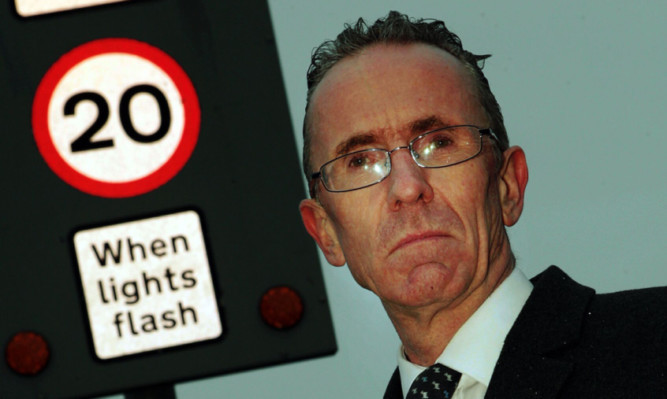Twenty mile per hour limits on some of Dundee’s roads are to be debated for the second time in less than a year by councillors.
Last June, West End councillor Fraser Macpherson proposed to the development committee that communities should be consulted on where residents feel a 20mph limit would be appropriate.
That failed to get support at committee by a single vote due, Mr Macpherson says, to the failure of SNP councillors to support a consultation exercise.
He has now announced that he has secured a further debate on the matter at the city council meetings on Monday February 23 after pointing out that new Transport Scotland guidance is more supportive of 20mph zones in appropriate areas.
Mr Macpherson said: “The sort of locations I feel these may be appropriate for are narrow streets in highly residential areas, and particularly where there are large numbers of elderly people living or children out playing.
“Examples in the West End where residents have indicated support include the Perth Road lanes and the Logie area, both of which have very narrow streets and areas of sheltered housing.
“The reason behind my renewed call is new Transport Scotland guidance, published on behalf of the Scottish Government, that is far more supportive of 20mph zones in appropriate areas than the previous 2002 guidance.”
Mr Macpherson has now written to Dundee City Council’s head of transport pointing out their policy to oppose consultation on 20mph zones and implement them in appropriate streets is now at odds with government guidance.
“There is significant evidence that 20mph limits in residential areas have a positive impact on road safety,” he said.
“The road safety charity Brake has a useful car stopping distances calculator which highlights how much longer it takes to stop at 30mph and higher compared with at 20mph or under.
Mr Macpherson added: “I think it’s important to explode a few myths about what I am proposing.
“There is no suggestion of imposing lower speed limits without public consultation 20mph should be introduced only where residents want it.
“There is no suggestion that 20mph limits would be followed by calls for even lower limits.
“Also, 20mph zones are only appropriate for residential areas I am not suggesting major routes become 20mph.
“It is clear, from the large amount of feedback I had from residents, that there is significant public demand for this road safety measure.
“The city council cannot continue to hide its head in the sand about the new Transport Scotland guidance, so I have requested this renewed debate at the city development committee later in the month.
“At this stage, all I am asking for is proper public consultation on this matter with communities across our city.”A motorist’s viewTwenty mile per hour limits should be introduced around primary and high schools, near old folks’ homes and on busy shopping streets, writes Jack McKeown, motoring editor.
If you target themwhere they are mostneeded they will beeffective and crucially supported by thepublic.
After Edinburgh announced plans for many more 20mph zones, a senior police officer on STVnews said they would notroutinely police them and would instead focus on schools andaccident black spots.
The most successfullaws have the support ofthe public and the police.
This has neither.
Councillors want people to embrace greeneroptions such as cycling ortaking the bus. But youdon’t get people out ofcars by making drivingmore difficult. You getpeople on to bicycles bydeveloping networks ofdedicated cycle lanes, andon to buses and trains by keeping fares low andservice high.
Campaigners now wantto see 20mph limitsintroduced in built-upareas all over Scotland.
What then? Will the nextcampaign call for 10mphlimits? Or will they ask forcars to be banned entirelyfrom all towns and cities?A cyclist’s viewThis is an argument I won’t win. However, I maintain we’d all benefit from 20mph limits in our towns and cities, writes Richard Rooney, online editor.
A few years ago Idecided to slow down,leave the car at homeand become a cyclingcommuter.
Has that made meanti-driver? I hope not.
But I have becomemuch more propedestrian.
Admit it: 30mphoften really means31mph, 32mph,33mph… (I know,because I’m also guiltyof that when I drive.)
I don’t pretendeveryone would stickto 20mph at all timesbut I support a loweredlimit because it wouldstart to drag averagespeeds down. And allthe evidence shows thatwould save lives.
Does getting toyour destination a fewminutes earlier reallymatter more thanchildren’s right to walkto school safely?
I regularly explorethe DC Thomson photoarchives and one of thethings that strikes me ishow vibrant our streetsused to be before carsbecame so dominant.
Make them safer, andmaybe we can get someof that back.
